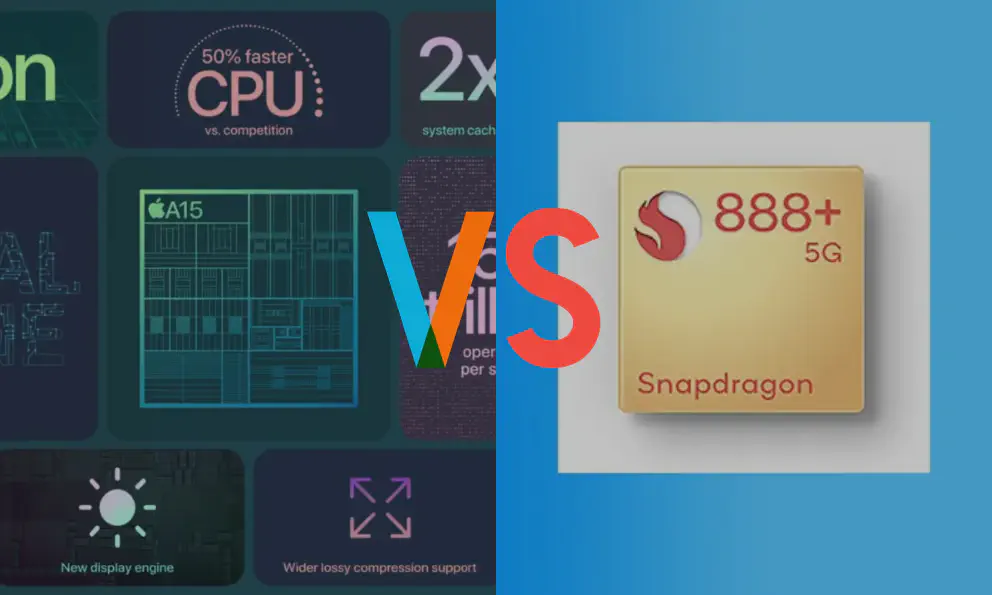Apple just updated their iPhone and iPad line up to the iPhone 13 and the introduction of the new iPad and iPad Mini. Just like every phone that Apple updates every year, it comes with a new processor that powers the phone. As always, Apple claims that this year is faster by a wide margin than last year’s processors and you will be able to do a lot more with all that power. Is it really?
On the surface, it does look like the same song but in a different key. A few revised cores here and there. A slight bump in clock speed. Maybe push some RAM. But do all the incremental upgrades add up? How does the competition stack up against it? We compare it with the Qualcomm flagship, the SnapDragon 888 which was released earlier this year.
Executive Summary The A15 scored well in CPU benchmarks but the SnapDragon 888 is the one to beat in the graphics department. However, do not discount the optimization Apple has made because of their tight integration between software and hardware.
The A15
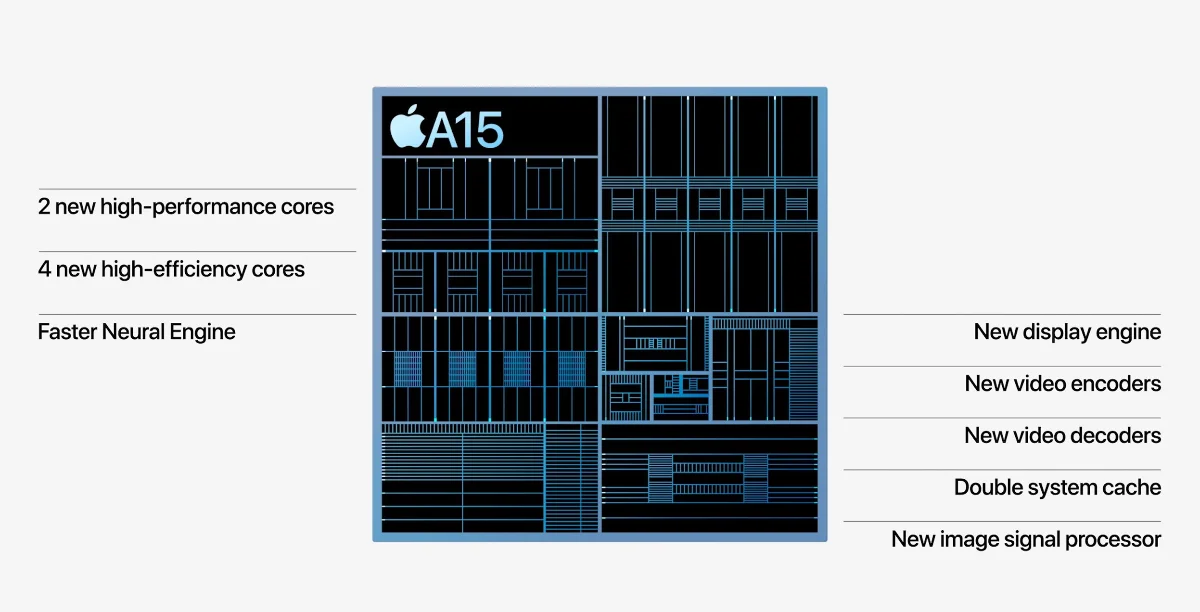
The A15 chip, the chip that powers the brand spanking new iPhone 13, iPhone 13 Pro and the refreshed iPad Mini. Apple spent a considerable amount of time touting the features of the new A15 chip like a redesigned neural core, video decoder and encoder and image processor, but at the same time, give a very vague statement about how powerful and good the performance is. Statements like “50% better than the competition” does not give confidence when they do not tell which competition they are referring to.
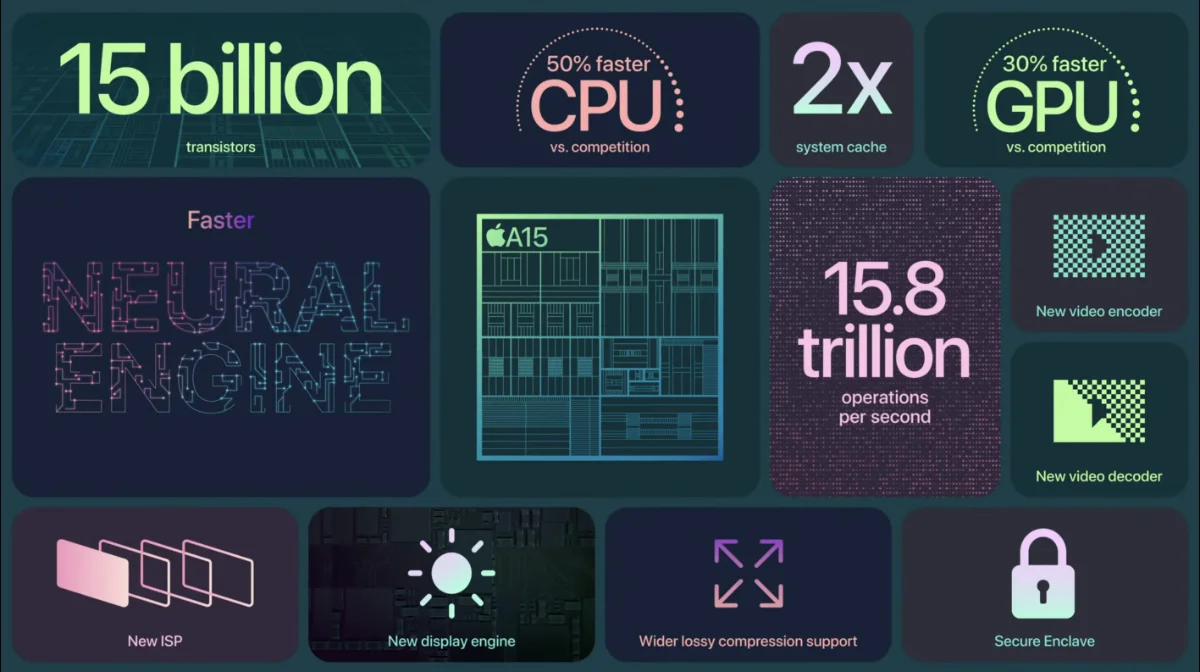
Anyways, on stage, Apple says there are two versions of the A15 that they will be handing out. The biggest difference is that the base version has 4 GPU cores while the higher end version that will be on the iPhone 13 Pro, iPhone 13 Pro Max and the iPad Mini has the higher end version with 5 GPU cores. What they did not tell anybody is that the GPU on the iPad Mini is slightly under-clocked for unknown reasons which might include heat management, power consumption or just making the iPhone 13 Pro the better product.
Just like how car companies basically make the same product at every revision (same engine layout, same seats, etc), but the small implementation details on every part on the SOC is revised, so the end result is that the performance and efficiency is higher. So, essentially that is what the A15 is: an A14 SOC from last year which keeps the same layout, but all the small implementation details like the image decoder, video encoder and decoder, the neural engine and the clock speed are revised and redone, so in the final form, you get a significant amount of efficiency from the chip. Performance is up by 10-15% across the board, which is no small mean feat, but all that performance increase with decrease power consumption, which is not being talked about enough.
Apple’s tactic to do incremental upgrades is not something out of the ordinary since the whole chip making industry is doing it. Making a high end chip is a hard business and making incremental improvements on the current design is a sure thing than having to come up with a completely new architecture on every version of the chip.
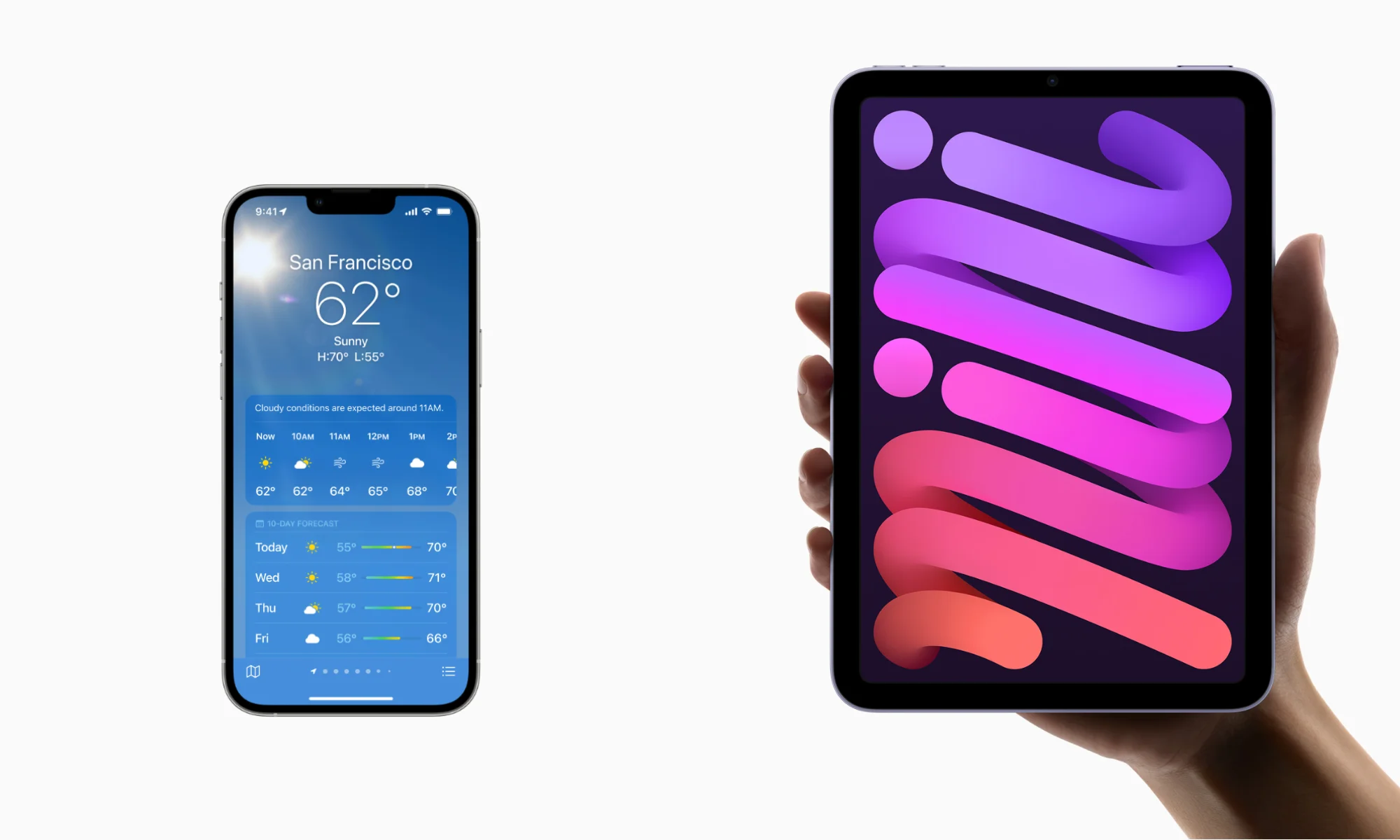
Snapdragon 888 and 888+
SnapDragon 888 is Qualcomm’s answer to the A14 while it tries its best to future proof itself against the A15. It was launched in late 2020 and later was on Samsung flagship phone, the Galaxy S21 US Models in January 2021. Since then, Qualcomm has launched a revised version of the 888 called the 888+ which we will not be covering much at the point since we cannot find any phones that run the 888+ yet.

As one could expect, Qualcomm’s design philosophy is totally different from Apple’s. It’s emphasis on raw performance means that it has three kinds of processors instead of two. There are the four efficiency cores, three performance cores and finally the single powerful high performance cores. The GPU is also given a huge emphasis and bump and squarely more massive and sophisticated than Apple’s implementation. The design reflects the difference in culture on both Apple and Qualcomm: Apple designs chips for its products so they build the chip around the product while Qualcomm is a chip merchant who has different customers with different needs that might be at the opposite side of the spectrum. So, while A15 is especially built for the iPhone, the SnapDragon is more of a generalist that can do anything you throw at it.
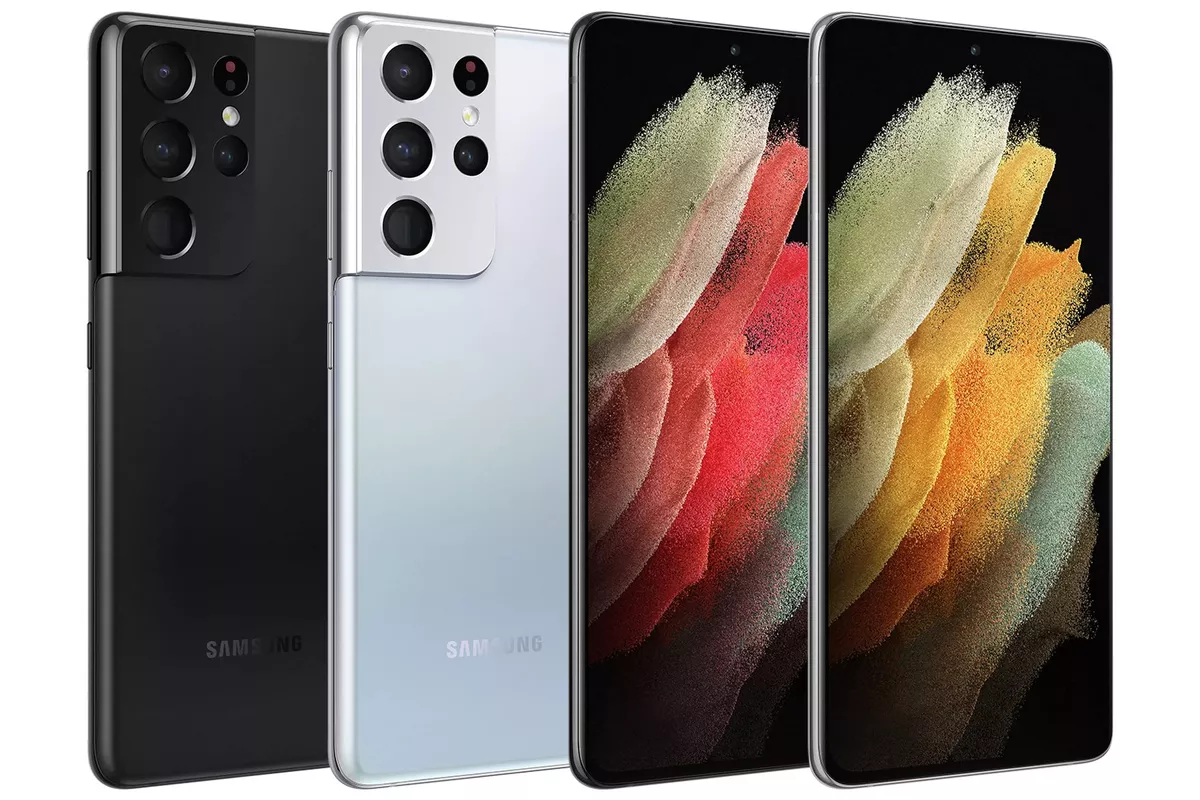
Benchmark Results
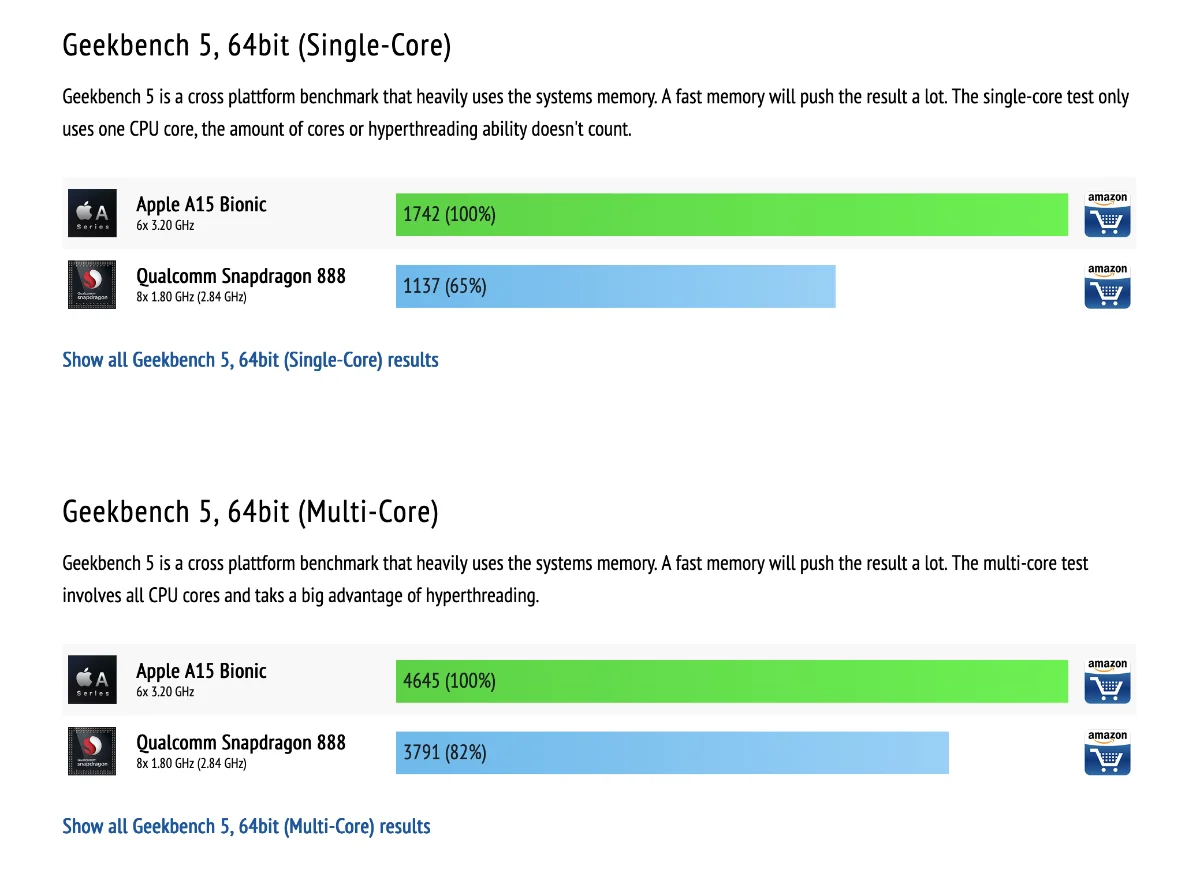
The benchmark result tells an interesting story. In GeekBench, as expected, Apple widen its lead against the SnapDragon 888. In single core, the A15 score almost twice as much as the SnapDragon. SnapDragon only close the gap in multicore thanks to its advantage of having 8 cores running instead of A15’s 6. However, SnapDragon still loses in the multicore category.
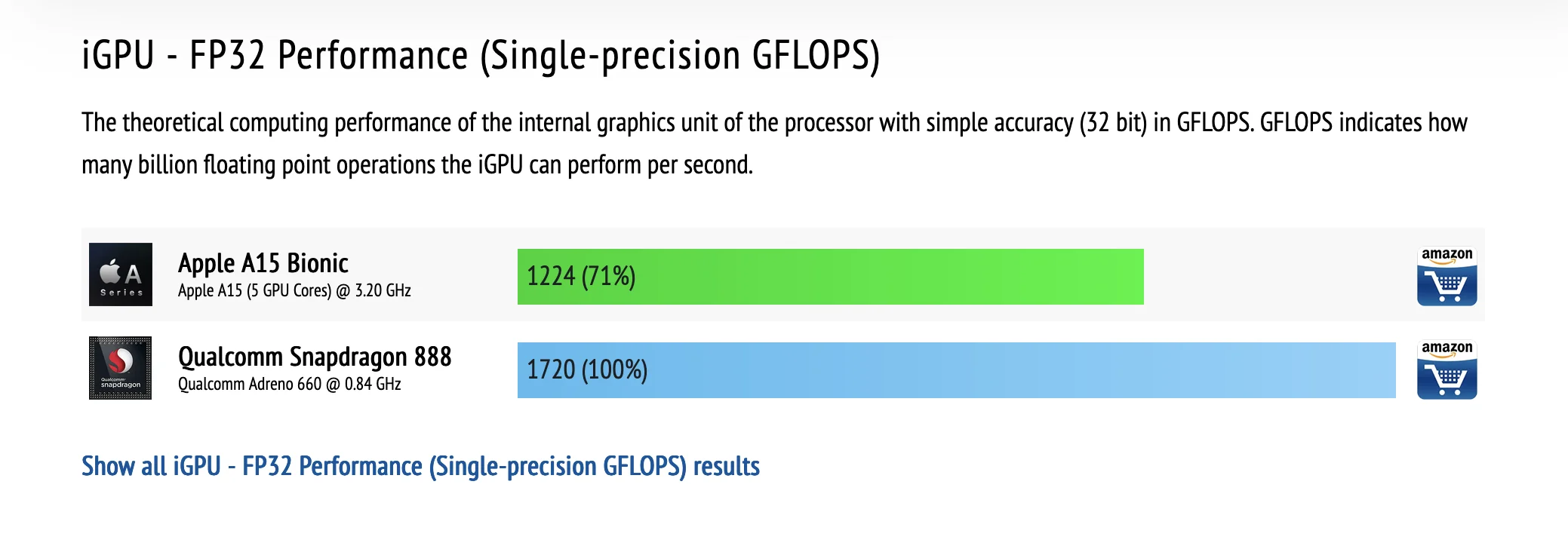
In GPU, the SnapDragon still has the most powerful of GPUs. It would be interesting to see video performance as Apple concentrates more on processing images and video than drawing triangles in a 3D game, and they are handled by different cores in the SOC.

Tracking the performance evolution in the A-series chip from A10 to all the way to A15 tells us about Apple’s relentless pursuit of performance and efficiency. Not only the A15 on the iPhone 13 can do much, much more than the A10 on the iPhone 7 (like portraiture video and photography, spatial audio, scan your face for authentication), it is also able to do so while consuming less power than ever before. Year on year performance gains might be incremental, but look over a longer timeline, those gains add up significantly.
Power consumption is also an improvement in the A15 against the SnapDragon 888. According to Twitter user @Golden_Reviewer, the A15 uses less than half of the power consumption against SnapDragon 888. While the Apple A-series is known to be more power efficient than the SnapDragon counterpart, it seems with the A15, the gulf is bigger than before.


Conclusion
The chip from Cupertino remains the one to beat in terms of raw performance and power efficiency. SnapDragon retains the GPU king but this points to Apple focusing on video / image processing rather than 3D rendering unlike the Qualcomm solution which is to have a blunt object to smash any computational problems. Either way, competition drives innovations and, in the end, we the consumer get the benefit of having supercomputers on the palm of our hands.
Plug
Support this free website by visiting my Amazon affiliate links. Any purchase you make will give me a cut without any extra cost to you
- iPhone 13 Mini - Amazon USA / Amazon UK
- iPhone 13 - Amazon USA / Amazon UK
- iPhone 13 Pro - Amazon USA / Amazon UK
- iPhone 13 Pro Max - Amazon USA / Amazon UK
- iPhone SE - Amazon USA / Amazon UK
- iPad Mini - Amazon USA / Amazon UK
- iPad - Amazon USA / Amazon UK
- iPad Air - Amazon USA / Amazon UK
- iPad Pro - Amazon USA / Amazon UK
- Accessories:-
- AirPods - Amazon USA / Amazon UK
- AirPods Pro - Amazon USA / Amazon UK
- AirPods Max - Amazon USA / Amazon UK
- MagSafe Cable - Amazon USA / Amazon UK
- 20W Charger - Amazon USA / Amazon UK
- MagSafe Case - Amazon USA / Amazon UK
